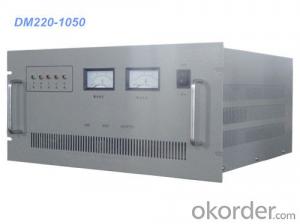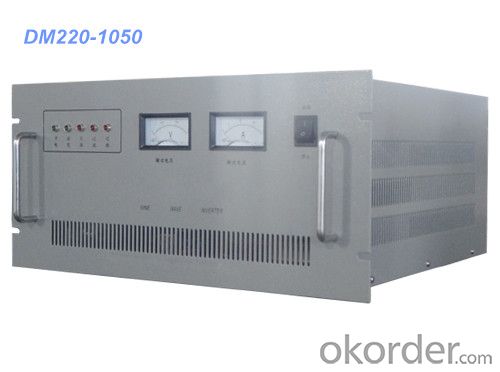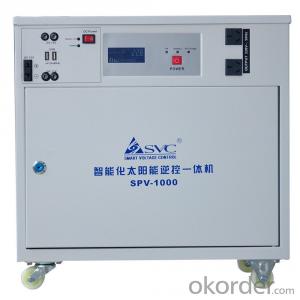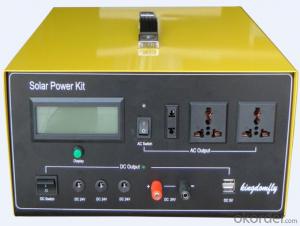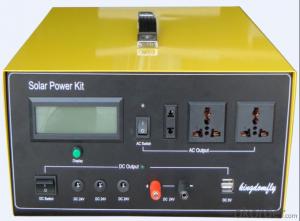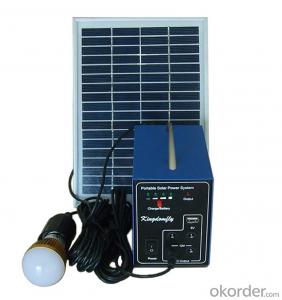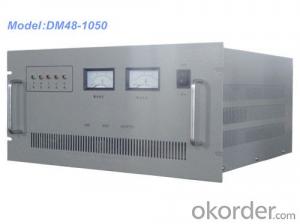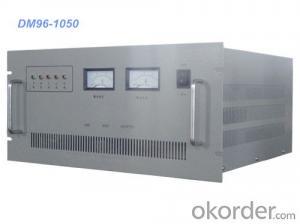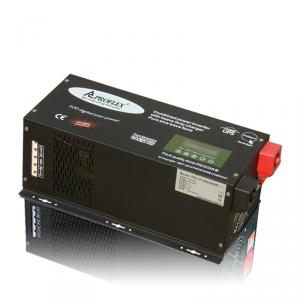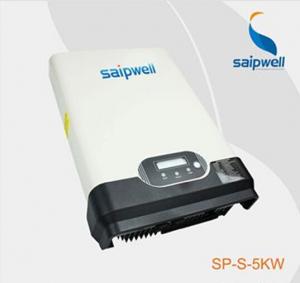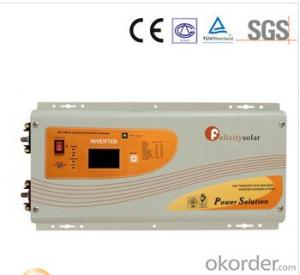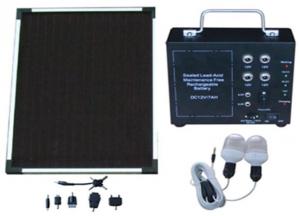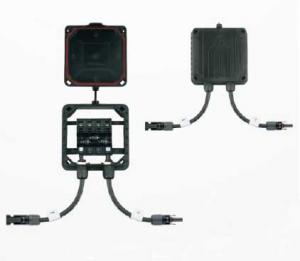Mountaintop Solar Energy Systems - Pure Sine Wave Inverter/ Solar Power Inverter 5kVA 220V with Isolate Transformer
- Loading Port:
- Qingdao
- Payment Terms:
- TT OR LC
- Min Order Qty:
- 1 unit
- Supply Capability:
- 800 unit/month
OKorder Service Pledge
OKorder Financial Service
You Might Also Like
Specifications
1.using IGBT from Mitsubishi company
2.using American ATEMEL company microprocessor
3.Max. Efficiency>94%
Features:
1. using IGBT from Mitsubishi company as the power components
2. using American ATEMEL company microprocessor as figure controller
3. perfect protection and warning functions
4. circuit frame compact,Max. Efficiency≥94%
5. with wide input voltage range
6. RS232/485 communication,multi communication interface can be selected
7. big-screen English LCD, perfect display, interface-friendly
Off Grid Pure Sine Wave Inverter 5KW 96/110/120V for wind power and PV power with factory price
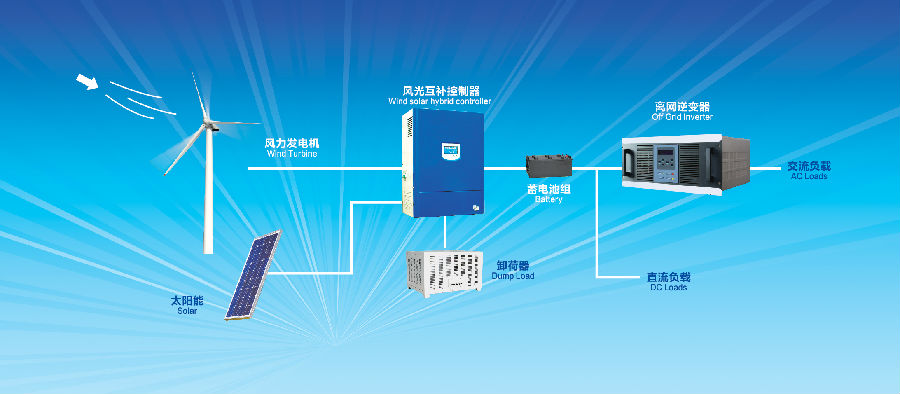
Technical Data Sheet
Type | ND220-5KD | ||||
DC input | Input rated voltage | 220 VDC | |||
Input rated current | 22.7 A | ||||
Input DC voltage range | 180-300 VDC | ||||
AC input | Allow input voltage range | 110 VAC / 120 VAC / 220 VAC / 240 VAC ± 15% | |||
Input rated current | 45.5A / 41.7A / 22.5 A / 21A | ||||
Bypass transfer time | ≦4 ms | ||||
AC output | Rated capacity | 5KVA | |||
Output rated power | 4KW | ||||
Output rated voltage and frequency | 110 VAC / 120 VAC / 220 VAC / 240 VAC,50Hz / 60Hz | ||||
Output rated current | 45.5A / 41.7A / 22.5 A / 21A | ||||
Output voltage accuracy | 110 VAC / 120 VAC / 220 VAC / 240 VAC± 2% | ||||
Output frequency accuracy | 50Hz / 60Hz ± 0.05% | ||||
Waveform distortion (THD). | ≤3% | ||||
Dynamic response time | 5% | ||||
Power factor (PF) | 0.8 | ||||
Overload capacity | 120%,3minutes,150%,10second | ||||
Crest factor (CF) | 3:1 | ||||
Inverter efficiency | 90% | ||||
Working Environment | Dielectric strength | 1500VAC,1minute | |||
Noise (1m) | ≤50dB | ||||
Ambient temperature | -10℃~+50℃ | ||||
Humidity | 0~90%,No condensation | ||||
Altitude | ≤5000 m | ||||
Industrial Frequency Transformer | Yes | ||||
Production function | Input reverse protection, input under-voltage protection, output overload protection, output short circuit protection, thermal protection | ||||
Dimensions | 482*420*223mm | ||||
Weight | 52kg | ||||
- Q: What is the system voltage of solar panels
- Solar panels (Solar panel) is composed of one or more solar cells to form a solar panel. A solar cell is a semiconductor device that converts light into electrical properties, which can convert solar radiation energy on its surface into direct current
- Q: Can solar energy systems be used for powering space exploration missions?
- Yes, solar energy systems can be used for powering space exploration missions. Solar panels are commonly used in space missions to generate electricity by converting sunlight into usable energy. These panels are lightweight, reliable, and can provide a continuous power source in space, making them ideal for long-duration missions. Additionally, solar energy is abundant in space and can be harnessed even in the most remote locations, reducing the need for heavy and limited fuel supplies.
- Q: Can solar energy systems be used in all regions?
- Solar energy systems can be used in all regions to some extent. However, the effectiveness and efficiency of solar energy systems may vary depending on factors such as the amount of sunlight available, local climate conditions, and the size and orientation of the solar panels. In regions with abundant sunshine, solar energy systems can provide a significant portion of the energy needs. In regions with less sunlight, solar energy systems can still be used but may require additional support from other energy sources.
- Q: How much space is needed for installing solar panels?
- The space needed for installing solar panels depends on various factors, such as the size and number of panels, their efficiency, and the energy requirements of the property. On average, a typical residential solar panel system requires around 100-400 square feet of unshaded roof space per kilowatt of installed capacity. However, ground-mounted systems can be installed if there is enough available space. It is recommended to consult with a solar installation professional to determine the specific space requirements based on individual circumstances.
- Q: Can solar energy systems be used in powering dental clinics or medical clinics?
- Certainly, dental clinics or medical clinics can indeed utilize solar energy systems to generate power. Solar energy, a clean and sustainable power source, can be harnessed through photovoltaic (PV) panels to produce electricity. These panels convert sunlight into usable energy, which can then be utilized to operate various electrical equipment and appliances in dental or medical clinics. Typically, dental and medical clinics require a substantial amount of electricity for their operations, including lighting, air conditioning, medical equipment, computers, and other electrical devices. By installing solar panels, these clinics can decrease their reliance on the traditional power grid and lower their electricity expenses. Solar energy systems can be tailored to meet the specific energy requirements of dental or medical clinics, ensuring smooth and efficient functioning. The electricity generated by solar panels can be optimized by analyzing the clinic's energy consumption patterns and installing an appropriate number of solar panels to meet the demand. Moreover, besides the cost savings, employing solar energy systems also offers environmental advantages. Solar power is a clean energy source that does not produce any greenhouse gas emissions or air pollutants during operation. By transitioning to solar energy, dental and medical clinics can decrease their carbon footprint and contribute to a healthier environment. Additionally, solar panels have a long lifespan and require minimal maintenance, making them a dependable and resilient energy solution for dental and medical clinics. With proper installation and regular inspections, solar energy systems can provide a consistent and uninterrupted power supply for many years. All in all, solar energy systems present a practical and feasible choice for powering dental or medical clinics. They provide cost savings, environmental benefits, and a reliable electricity source, enabling clinics to operate efficiently while minimizing their impact on the environment.
- Q: How much space is required to install a solar energy system?
- The space required to install a solar energy system varies depending on the system's capacity and the available sunlight. On average, a typical residential solar panel system requires around 100 to 400 square feet of roof space. However, ground-mounted systems can also be used when roof space is limited, requiring about 1000 to 2000 square feet of land. It is important to consult with a solar energy professional to determine the exact space requirements based on specific energy needs and site conditions.
- Q: Can solar energy systems be used in powering recreational facilities like gyms or spas?
- Certainly, solar energy systems are an excellent choice for powering recreational facilities such as gyms and spas. In fact, many of these establishments have already embraced solar energy as a sustainable and cost-effective solution for their energy requirements. The installation of solar panels on the roof or in close proximity to the facility allows for the capture of sunlight and its conversion into electricity. This clean and renewable energy source can then be utilized to power various equipment, including lighting, air conditioning, heating, and other electrical systems within the facility. By incorporating solar energy systems, recreational facilities can significantly reduce their dependence on traditional energy sources, such as fossil fuels. This not only contributes to the reduction of carbon emissions and the fight against climate change but also provides long-term financial advantages. Over time, solar power can result in substantial energy savings, as gyms and spas have the potential to generate their own electricity and even sell any excess power back to the grid. Furthermore, solar energy systems can be seamlessly integrated into the design of recreational facilities. The sleek and modern appearance of solar panels can enhance the overall aesthetic appeal of the facility, while also showcasing its commitment to environmental sustainability. This can attract environmentally conscious customers who appreciate businesses that prioritize renewable energy and contribute to a greener future. In conclusion, solar energy systems are a viable and increasingly popular option for powering recreational facilities like gyms and spas. By harnessing the power of the sun, these facilities can reduce their carbon footprint, save on energy costs, and attract environmentally conscious customers.
- Q: Can solar energy systems be used for large-scale power generation?
- Yes, solar energy systems can be used for large-scale power generation. Advances in technology and decreasing costs have made it increasingly feasible to deploy solar panels on a larger scale, such as solar farms or utility-scale solar power plants. These systems utilize multiple solar panels to capture sunlight and convert it into electricity, which can then be integrated into the grid to meet the power needs of a significant number of homes, businesses, or even entire communities. Additionally, the scalability of solar energy systems allows for their implementation in various geographical locations, making them a viable option for large-scale power generation worldwide.
- Q: What is the role of voltage optimizers in a solar energy system?
- The role of voltage optimizers in a solar energy system is to optimize and regulate the voltage levels of the electricity produced by the solar panels. Solar panels generate direct current (DC) electricity, which needs to be converted to alternating current (AC) in order to be used by most household appliances and to be fed into the electrical grid. However, the voltage produced by solar panels can vary depending on various factors such as sunlight intensity, temperature, and shading. This inconsistency in voltage can lead to inefficient energy production and can potentially damage the electrical equipment connected to the system. Voltage optimizers help address these issues by stabilizing and regulating the voltage levels within the solar energy system. They ensure that the voltage produced by the solar panels is consistent and within the optimal range for efficient energy production. By maintaining a stable voltage, voltage optimizers also protect the electrical equipment from potential damage caused by voltage fluctuations. Furthermore, voltage optimizers can improve the overall performance and efficiency of the solar energy system. By optimizing the voltage levels, they reduce energy losses and maximize the electricity output of the solar panels. This improves the overall system efficiency and helps to maximize the return on investment for the solar energy system. In summary, voltage optimizers play a crucial role in a solar energy system by stabilizing and regulating the voltage levels, ensuring efficient energy production, protecting electrical equipment, and maximizing the system's overall performance and efficiency.
- Q: What is the impact of snow or ice on solar energy system performance?
- Snow or ice can have a significant impact on the performance of a solar energy system. When snow or ice covers the solar panels, it prevents sunlight from reaching the surface and reduces the system's energy production. Additionally, the weight of accumulated snow or ice can cause damage to the panels or mounting structures. However, advancements in technology and the tilt of solar panels can help minimize the impact by allowing the snow or ice to slide off more easily. Regular maintenance and cleaning may also be required to ensure optimal performance during winter conditions.
Send your message to us
Mountaintop Solar Energy Systems - Pure Sine Wave Inverter/ Solar Power Inverter 5kVA 220V with Isolate Transformer
- Loading Port:
- Qingdao
- Payment Terms:
- TT OR LC
- Min Order Qty:
- 1 unit
- Supply Capability:
- 800 unit/month
OKorder Service Pledge
OKorder Financial Service
Similar products
Hot products
Hot Searches
Related keywords
